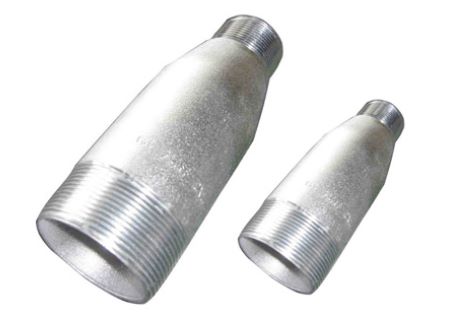Have you ever wondered how to create stronger, tighter seals in your pipework? Swedge fitting is the answer. Join us as we explore this innovative technique and its advantages over traditional methods.
What is Swedge Fitting and Why It Matters
Swedge fitting is a specialized joining technique that utilizes mechanical pressure to create a secure, leak-proof connection between two components. It’s commonly used in various industries, particularly those involving fluid transfer and hydraulic systems.
Importance of Secure Seals in Pipework and Hydraulic Systems
In pipework and hydraulic systems, a secure seal is paramount. Leaks can lead to:
➡️ Fluid loss: Wasting valuable resources and increasing operational costs.
➡️ Safety hazards: Potential for accidents and injuries.
➡️ System inefficiency: Compromised performance and reduced productivity.
How Swedge Fitting Works: A Quick Overview
Swedge fitting relies on the principle of mechanical compression. A specialized tool applies pressure to a fitting, forcing it to expand and grip the inner wall of the pipe or tube. This creates a tight, friction-based seal that prevents leaks.
Key Components Involved in the Swedge Fitting Process
➡️ Swedge fitting: The connector piece with a tapered or serrated profile.
➡️ Swedge tool: A hydraulic or pneumatic tool that applies the necessary force.
➡️ Pipe or tube: The component to be connected.
Types of Swedge Fittings: Which One is Right for You?
Common Materials Used in Swedge Fittings
Swedge fittings are typically made from durable materials like:
➡️ Stainless steel: Offers excellent corrosion resistance.
➡️ Carbon steel: Provides high strength and durability.
➡️ Brass: Offers good conductivity and machinability.
Different Styles of Swedge Fitting: Applications and Benefits
➡️ Ferrule fittings: Use a ferrule to create the seal.
➡️ Compression fittings: Rely on compression to secure the connection.
➡️ Barb fittings: Feature barbs that bite into the hose or tube.
Choose the right style based on your specific application and the level of pressure and temperature involved.
The Benefits of Swedge Fitting Over Traditional Methods
➡️ Enhanced Durability and Leak Prevention
Swedge fittings offer superior durability and leak resistance compared to traditional methods like threading or welding.
➡️ Faster Installation: Save Time and Money
Swedge fitting is a quick and efficient process, reducing installation time and labor costs.
A Step-by-Step Guide to Installing Swedge Fittings
1. Prepare Your Pipes: Ensure the pipe ends are clean and free of burrs.
2. Insert the Fitting: Slide the swedge fitting onto the pipe.
3. Use the Swedge Tool: Apply the correct amount of pressure to compress the fitting onto the pipe.
4. Inspect the Seal: Verify the connection for leaks.
Common Mistakes to Avoid When Using Swedge Fittings
➡️ Over compression: Excessive force can damage the fitting and the pipe.
➡️ Improper Alignment: Misalignment can lead to leaks and weak connections.
Top Industries Relying on Swedge Fitting for Secure Connections
➡️ Oil and Gas: For critical pipeline connections.
➡️ Automotive and Aerospace: For hydraulic and fuel systems.
Maintenance and Troubleshooting Tips for Swedge Fittings
➡️ Frequent Inspection: Look for indications of deterioration, corrosion, or wear.
➡️ Tighten Loose Fittings: Use a swedge tool to re-tighten loose connections.
➡️ Replace Damaged Fittings: If a fitting is beyond repair, replace it immediately.
Conclusion: Why Swedge Fitting is the Go-To for Reliable Seals
Swedge fitting offers numerous advantages, including:
➡️ Stronger, more durable seals
➡️ Faster installation times
➡️ Reduced maintenance requirements
By understanding the basics of swedge fitting and following best practices, you can ensure reliable and long-lasting connections in your pipework and hydraulic systems.
Post time: Oct-31-2024


